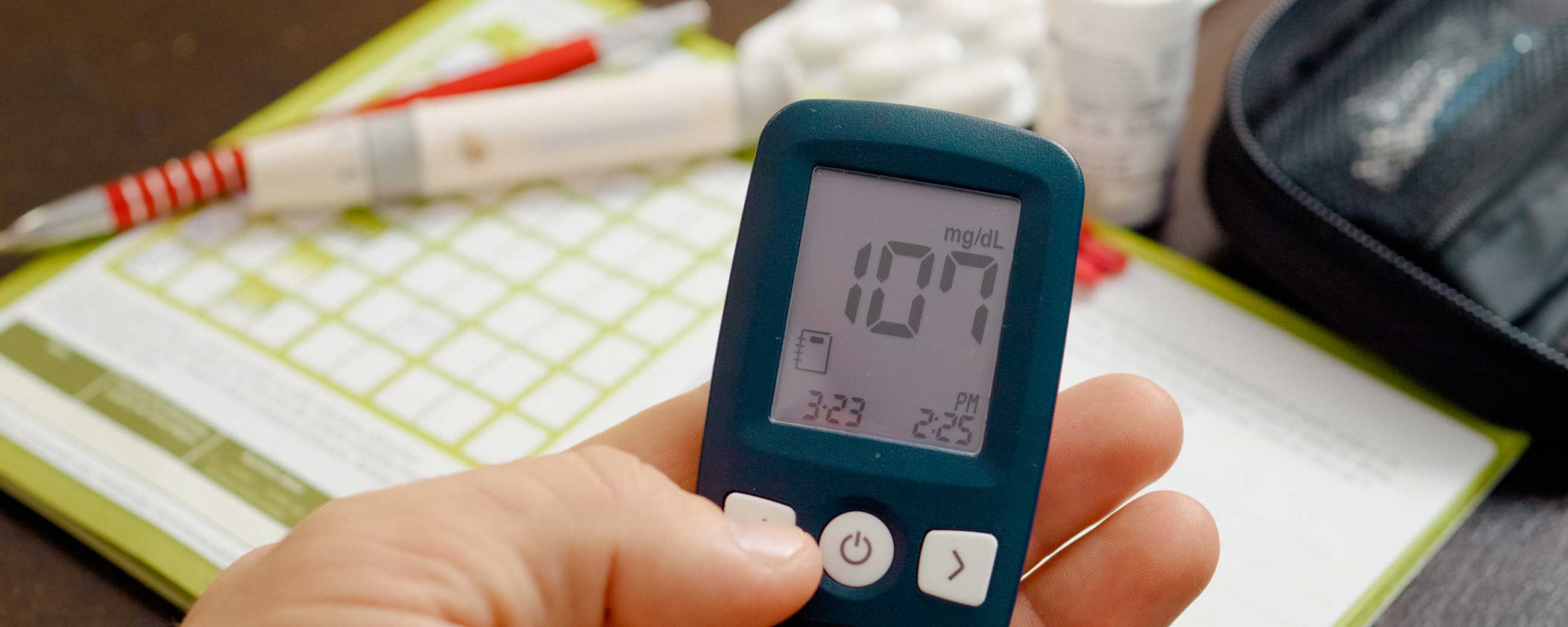
How Long Does it Take Metformin to Work?

When Eileen learned she had Type 2 diabetes in 1980, she was scared. She went on Metformin, an oral medication that is FDA-approved for treating Type 2 diabetes. (Doctors may also prescribe metformin for prediabetes.)
Unfortunately, on Metformin, Eileen experienced stomach aches, a common side effect. Unhappy with her results on the drug, Eileen joined Virta in 2017 and stopped taking metformin. On the Virta program her A1C and blood pressure have returned to normal, and she’s lost weight.
Metformin can be an important part of diabetes management and is generally safe and well-tolerated. However, understanding signs metformin is working (or that it isn’t working for you) can help you advocate for customized care. You may also benefit from metformin alternatives. How long does metformin take to work, and what are signs it is (or isn’t)? Let’s discuss.
How long does it take for metformin to kick in?
The timeframe for noticing signs metformin is working can vary. You might notice some improvements sooner than others. For instance, one 2006 trial found that people saw blood sugar declines during the first week of taking metformin. A1C levels, which measure average blood sugar over the previous 90 days, were also significantly lower in the study at 12 weeks.
How? Diabetes makes your body more resistant to insulin, causing blood sugar to spike. Metformin, usually taken with meals once or twice daily, assists with insulin resistance by lowering the amount of glucose your liver makes and that your intestines absorb when eating or drinking.
However, several factors can play into metformin’s effectiveness and timeline, including:
- Prescribed dosage
- Whether it’s being taken as directed
- Interactions with other glucose-lowering medications you are taking, like insulin
- Lifestyle habits, like nutrition and exercise
Signs that Metformin is working
Understanding common signs that metformin is working and the expected timeline for seeing results will help you and your healthcare team gauge whether or not this medicine is useful for you. It can also help you to work with your provider to adjust dosing (or pivot to alternatives).
Lower blood sugar
Usually, the first indication that is working for you is seeing lower blood sugar levels. This can happen within the first few days. These numbers represent your blood sugar levels over a short period, so it’s easier to gauge them more quickly than other signs metformin is working, like reduced A1C.
Your doctor will discuss how often to check your blood sugar, such as in the morning (while fasting) and after meals. Logging your levels can help you start to notice trends.
Lower A1C
Your A!C measures blood sugar over a longer period of time. Your doctor will usually check it every three to six months. Since the measurement isn’t meal-to-meal like the levels you track daily, it will take longer to see this improvement (around two to three months).
Weight loss
While GLP-1s like Wegovy have garnered attention for weight loss, some research suggests metformin may help a small percentage of people lose a moderate amount of weight.. A 2019 study found that people taking metformin who lost at least 5% of their body weight in the first year were more likely to maintain it if they continued to take the medication.
It’s unclear why, but one possible reason is that metformin can lower appetite, prompting you to eat less.
Lower cholesterol
Diabetes puts you at greater risk for heart disease. Keeping cholesterol levels healthy is one way to lower those odds. One meta-analysis found that people taking metformin saw their total cholesterol, LDL (“bad” cholesterol), and triglycerides decrease significantly. Scientists are still looking into why, but one theory is that metformin may act on proteins that regulate cholesterol.
Symptoms that Metformin is not working
Metformin has its place in diabetes management. However, everyone responds to medications differently. You’ll want to understand signs you might need to work with your provider to pivot to another treatment.
Higher blood sugar
Your fasting and post-meal glucose numbers should decline soon after starting metformin, and hey should remain steady over time. Additionally, A1C should improve within three months. If you don’t see changes, you’ll want to discuss dosing, other lifestyle tweaks like diet and exercise, and metformin alternatives with your prescriber.
Fatigue
You may feel tired as your body adjusts to metformin, but it should dissipate. If it doesn’t, chronic fatigue might be a sign of the following conditions, and you should consult your prescriber.
- Low blood sugar (hypoglycemia)
- Vitamin B12 deficiency (which can happen when taking metformin)
- Lactic acidosis (a rare but dangerous side effect of metformin)
GI discomfort
Like fatigue, some GI discomfort is possible when someone begins taking metformin. However, your body should adapt over time. Chronic GI symptoms might indicate that you need to shift course, such as to a lower dose (or to an extended-release formulation), tweaked diet, or alternative, in which case you should consult your prescriber. These GI symptoms include:
- Nausea
- Vomiting
- Diarrhea
Blurred vision
Consistently high blood sugar levelscan contribute to vision problems. Research indicates that metformin can not only reduce blood sugar (and therefore lower this risk). It might also slow down age-related vision loss.
However, blurry vision could suggest that metformin isn’t lowering your blood sugar as you and your team hoped. It can (rarely) be a sign of lactic acidosis, so it’s worth addressing these concerns quickly. Talk to your prescriber if you are having vision problems after taking metformin.
The Takeaway
How long does metformin take to work? It depends. Some may see signs metformin is working, like lower blood sugar, in week one. Others may not see health improvements. It’s crucial to discuss blurry vision, fatigue, and unchanged blood sugar with your provider. Your care may need more customization, like lifestyle tweaks and metformin alternatives. Everyone is different, and you deserve personal care. If you are diagnosed with type 2 diabetes and want to live a healthier lifestyle — whatever that means for you — Virta Health may be able to support you. By making lifestyle shifts in a medical setting with useful resources like 1:1 virtual coaching, you can regain control of your health and feel like your favorite version of you. See if you’re eligible for Virta Health here.
This blog is intended for informational purposes only and is not meant to be a substitute for professional medical advice, diagnosis, or treatment. Always seek the advice of your physician or other qualified health provider with any questions you may have regarding a medical condition or any advice relating to your health. View full disclaimer
Are you living with type 2 diabetes, prediabetes, or unwanted weight?








